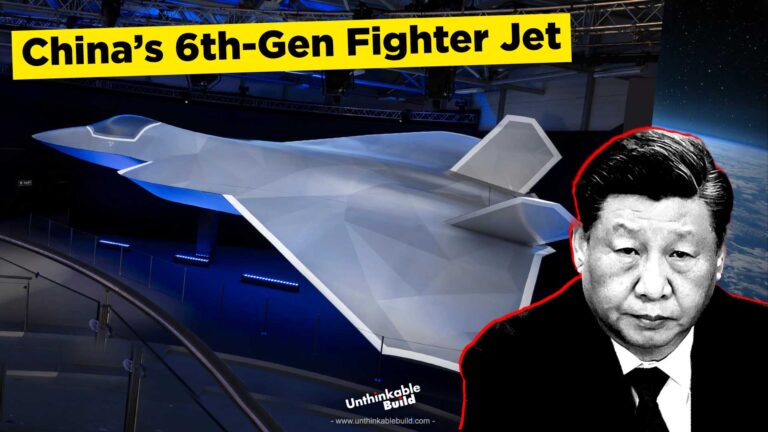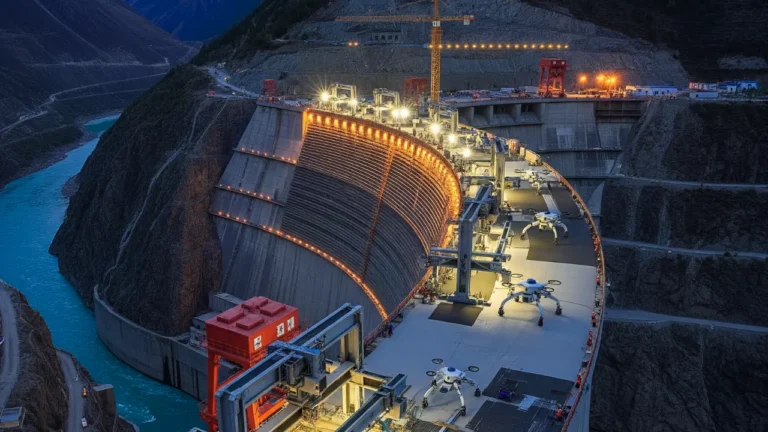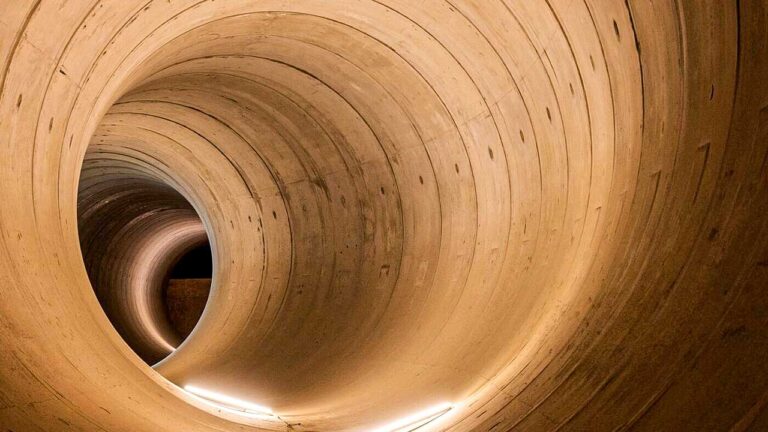Starfish Prime: Russia’s Nuclear Weapons Set for Space?
Space technology has made remarkable progress, marked by exciting advancements across various domains. Satellites continue to evolve, becoming increasingly sophisticated and versatile. These advancements facilitate improved communication, Earth observation, and navigation. Moreover, the deployment of smaller yet more capable satellites serve diverse purposes, including climate change monitoring and disaster response.
Significant progress has been made in the development of reusable rocket technology, exemplified by efforts from companies like SpaceX. This innovation not only reduces launch costs but also promotes sustainability in space travel.
As space technology keeps progressing, it’s not just about exploring space; it also brings advantages for life on Earth. However, alongside the competition among global powers in space tech, there’s also research into using Earth’s orbit for military purposes. Different experiments in this area are ongoing, conducted periodically.
Also Read: Arctic Passage: A Game-Changing $43 Billion Sea Route
Recent statements from US intelligence agencies suggest that Russia is in the process of developing a nuclear weapon intended for use in space. However, specific details regarding the nature of this weapon, its intended targets, and the potential implications are still under investigation. The process of gathering final and comprehensive information is currently underway.
Rumors circulating about Russia potentially deploying nuclear weapons in space have sparked concern among observers. However, experts offer reassurance, pointing out various factors that mitigate the perceived threat.
Legal constraints play a significant role. Russia is bound by international agreements, such as the Outer Space Treaty of 1967, which explicitly prohibits the placement of nuclear weapons in space, on celestial bodies, or in orbit. This treaty includes a provision prohibiting the placement of nuclear weapons or any other weapons of mass destruction into orbit. Notably, before signing the Outer Space Treaty, both the U.S. and the former Soviet Union conducted high-altitude nuclear tests in space.
Moreover, treaties like the New Start treaty seek to reduce the number of deployable nuclear arms, further reinforcing the legal barriers.
Another aspect to consider is the existence of anti-satellite weapons. While the rumored threat may involve nuclear-tipped anti-satellite weapons, such technology is not entirely novel. The United States developed similar weapons as early as 1959. Although Russia has explored space-based nuclear weapons in the past, practical concerns such as inefficiency and high costs have deterred significant advancement in this direction.
On July 9, 1962, the United States conducted a historic high-altitude nuclear test known as Starfish Prime, marking a significant event in the realm of nuclear experimentation.
A Thor missile was launched from Johnston Island, an atoll situated approximately 1,450 km southwest of Hawaii, to carry out the test. Ascending to an altitude exceeding 1,100 km, the missile reached its peak before commencing its descent. At the programmed height of 400 km, the 1.4 megaton nuclear warhead was detonated.
This explosion, notable as the largest nuclear test conducted in outer space, was one of five such tests undertaken by the United States in space. The yield of the detonation amounted to 1.4 megatons, equivalent to 1.4 million tons of TNT. Despite its occurrence at an altitude of 400 km above a point roughly 20 miles southwest of Hawaii, the flash resulting from the explosion was visible from the Hawaiian islands.
The Starfish Prime test formed part of the Operation Fishbowl series; a strategic endeavor aimed at examining the effects of high-altitude nuclear detonations in space. This landmark event underscores the intersection of technological innovation, military experimentation, and scientific exploration during the Cold War era.
The concept of space-based nuclear weapons, particularly those intended to disable satellites, has been contemplated. However, feasibility studies have shown significant drawbacks, leading to the abandonment of such endeavors by Russia.
Nonetheless, according to a recent intelligence report from the United States, there are indications that Russia could be working on the development of nuclear weapons intended for use in space. The disclosure of this intelligence initially came from Mike Turner, the chairman of the House Intelligence Committee. On February 14th, 2024, Turner released a statement suggesting the existence of a significant yet unspecified national security issue and urged the Biden administration to declassify the information.
Russian President Vladimir Putin refuted allegations from the United States regarding Moscow’s purported plans to deploy nuclear weapons in space. In an official statement, Putin emphasized, “Our stance is unequivocal and transparent. We have consistently opposed and continue to oppose the deployment of nuclear weapons in space.”
While the White House refrained from confirming whether the new Russian system includes a nuclear component, it did acknowledge Russia’s efforts to develop what it termed an anti-satellite capability.
In past, the Starfish Prime nuclear test conducted by the United States in 1962 drew significant attention and reactions from around the world, particularly from the Soviet Union. As the USSR closely monitored the test, they expressed apprehension regarding the potential impact of high-altitude nuclear detonations on the Earth’s ionosphere.
Scientific interest in the Starfish Prime test extended globally, with researchers intrigued by the data it yielded. The test provided valuable insights into the behavior of the ionosphere and the effects of nuclear detonations at high altitudes. Scientists utilized this data to enhance models and predictions related to space weather and the impact of nuclear weapons.
The Starfish Prime test also catalyzed discussions on the need to prohibit nuclear tests in space. This contributed to the development of the Outer Space Treaty of 1967, which explicitly prohibits the placement of nuclear weapons in space. Overall, the test prompted global deliberations on the environmental and security ramifications of nuclear detonations in space, highlighting the necessity for international cooperation and regulation in space activities.
As per a report from the Defense Threat Reduction Agency in 2010, Starfish Prime caused damage to approximately one-third of the satellites present in low-Earth orbit during that period. In recent times, the space realm has emerged as yet another theater of conflict.
While United States isn’t alone in conducting nuclear weapons tests in space, several other nations have also engaged in similar activities. The Soviet Union conducted numerous nuclear tests, including atmospheric tests, between 1949 and 1990. These tests significantly contributed to our understanding of nuclear weapons effects and the dynamics of space.
In 2007, China also carried out a space-based anti-satellite test by launching a missile that targeted and destroyed an old weather satellite. Whereas India conducted an anti-satellite test in March 2019, employing a ballistic missile to successfully shoot down one of its own satellites in low Earth orbit.
Furthermore, France conducted atmospheric nuclear tests from 1960 to 1996, providing valuable data on nuclear detonations and their impacts on the upper atmosphere, although these tests were not specifically conducted in space. It’s crucial to recognize that the consequences of space-based nuclear tests are indiscriminate and can have widespread ramifications.
Kari Bingen, Director of the CSIS Aerospace Security Project, asserts that currently, no satellite in orbit is beyond the reach of Russian missiles. Consequently, defending American satellites against a nuclear explosion in space poses significant challenges. However, certain satellites, particularly those constructed by the US government for the nuclear command and control system, have been specifically engineered to withstand nuclear attacks.
While the theoretical capability for deploying nuclear weapons in space exists, a combination of legal frameworks and practical challenges renders such scenarios improbable. The recent claims have been dismissed by the Kremlin as baseless accusations aimed at securing additional funding for countering Russia. Thus, there is no immediate cause for alarm regarding the alleged threat of space-based nuclear weapons.
Meanwhile, in 2019, the United States established a novel service branch known as the Space Force. This development signifies a significant shift, as adversaries aiming to threaten or challenge the United States in the crucial domain of space will now face a markedly altered landscape.
Also Read: Saudi Arabia’s The Line Shrinks to Just 2.4 KM?
The deployment of space nuclear weapons is fraught with significant risks and implications, urging caution and avoidance for several compelling reasons. The utilization of space nuclear power sources, whether for weaponry or other purposes, also poses inherent risks throughout their life cycle. Accidents during launch, operation, or decommissioning phases could result in the release of radioactive materials into Earth’s atmosphere and surface environment, posing significant health and environmental hazards.
As international norms increasingly condemn ground-based anti-satellite missile tests due to their generation of uncontrollable debris, the introduction of nuclear weapons into space would exacerbate this issue, further jeopardizing the safety and sustainability of space activities.
The perpetual escalation of an arms race poses a grave threat to the survival of humanity. We invite you to share your thoughts on this critical issue in the comments section below. Don’t forget to subscribe to our channel for access to upcoming videos, as well as past discussions on various vital topics.







